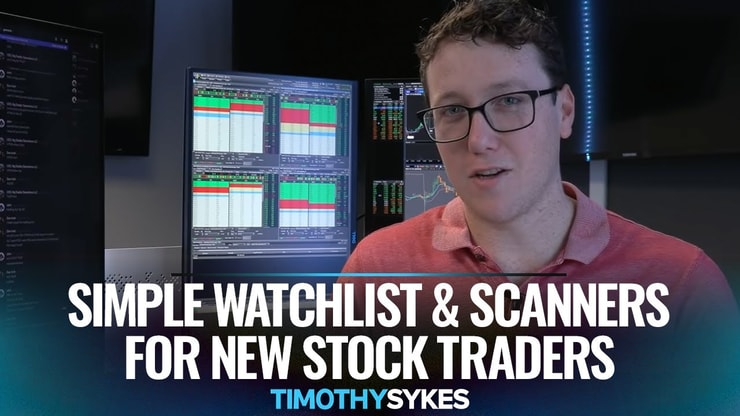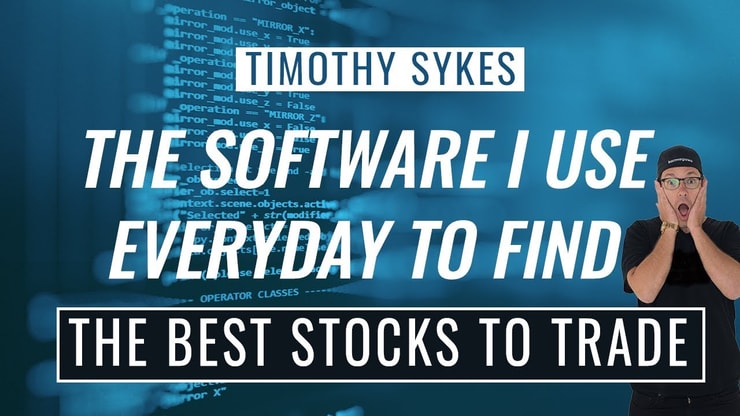A Canadian stock screener is an online tool that allows traders to filter stocks based on specific criteria such as market cap, dividend yield, and price-to-earnings ratios. These screeners are essential for anyone looking to invest in the Canadian markets, offering a streamlined way to find potential investment opportunities. Whether you’re a seasoned trader or just starting, a stock screener can be a game-changer for your portfolio.
Read this article because it’s a comprehensive breakdown of what to look for in a Canadian stock screener, tailored for both beginners and seasoned traders.
It has answers to the following questions …
- What Is the Best Canadian Stock Screener?
- What Tools and Features Should You Look for in a Canadian Stock Screener?
- How Do You Identify the Top Canadian Stock Screener for Your Needs?
- How Important Are Research Tools and Customer Support in a Stock Screener?
- Are There Free Stock Screeners Available?
- What Metrics Can You Filter in a Stock Screener?
- How Do Stock Screeners Differ from Each Other?
Table of Contents
- 1 What Is a Stock Screener?
- 2 Top-Ranked Canadian Stock Screeners
- 3 How To Buy Stocks Using a Stock Screener in Canada
- 4 Key Takeaways
- 5 Canadian Stock Screener FAQs
- 5.1 Are There Free Stock Screeners Available?
- 5.2 What Metrics Can You Filter in a Stock Screener?
- 5.3 How Do Stock Screeners Differ from Each Other?
- 5.4 How Do You Identify Top Gainers in Canadian Stocks?
- 5.5 What Additional Content Is Useful for Screening Stocks?
- 5.6 How Do International Markets in Europe and Asia Affect Canadian Stocks?
What Is a Stock Screener?

A stock screener is a tool that filters stocks based on user-defined metrics. Think of it as a search engine for equities. You set your criteria — like volume, price, or volatility — and the screener does the heavy lifting. It’s a tool I’ve used countless times to find those hidden gems in the market. But remember, while screeners can provide valuable data, they’re not a substitute for thorough research.
Stock screeners are available for various exchanges, including NYSE, Nasdaq, and CSE. They can be particularly useful for trading in sectors that you’re less familiar with. For instance, if you’re looking to diversify into crude oil or gold, a screener can help you identify the best options.
When it comes to Canadian stock screeners, the platform you choose can make or break your trading experience. But let’s not forget the importance of the trading platform itself. A reliable trading platform complements your stock screener by offering seamless trade execution, real-time data, and other essential features. I’ve seen traders struggle with platforms that are not up to the mark, and it’s not pretty. If you’re looking for the best Canada trading platform in 2023, I’ve got you covered. Check out my top picks for the best Canada trading platform in 2023 to elevate your trading game.
Why Use a Canadian Stock Screener?
Using a Canadian stock screener offers a targeted approach to finding stocks in the Toronto exchange. It’s a tool I often recommend to my students who are interested in Canadian equities. Screeners can help you find stocks that meet your specific investment goals, whether you’re looking for growth, income, or value.
The advantage of using a Canadian-specific screener lies in its focus on local market conditions and companies. You can filter by sectors prevalent in Canada, like natural resources, or by Canadian-specific indicators. It’s a tool that can save you time and potentially increase your profits.
How To Use a Stock Screener
Using a stock screener is straightforward. You start by setting your criteria. Maybe you’re looking for stocks with a high dividend yield or those that are trading at lows. Once you’ve set your filters, you run the screener and get your results. It’s a method I’ve taught to thousands of traders to help them find stocks that fit their trading style.
The screener will present you with a list of stocks that meet your criteria. From there, you can dive deeper, looking at charts, earnings reports, and other financials to make an informed decision. Remember, the screener is just the first step in your research process.
What Are Dividend Stock Screeners?
Dividend stock screeners focus on stocks that pay dividends. These are typically more stable companies with consistent earnings. If you’re looking to generate income alongside capital gains, this is a screener you’ll want to use. I’ve used dividend screeners to find stocks that provide a steady income, balancing out the more volatile penny stocks in my portfolio.
These screeners allow you to filter by dividend yield, payout ratios, and other dividend-specific criteria. They’re a great resource for investors looking to bolster the income-generating portion of their portfolio. And let’s face it, who doesn’t like a stock that pays you back?
Top-Ranked Canadian Stock Screeners
When it comes to Canadian stock screeners, you’ve got options. StocksToTrade, InteractiveBrokers, and Questrade Edge are just a few. Each has its own set of features and advantages. In my years of trading, I’ve found that the best screener for you depends on your trading style and the sectors you’re interested in.
Let’s not forget about WealthSimple, TD Direct Investing, BMO InvestorLine, Scotia iTRADE, and CIBC Investor’s Edge. These are all solid choices, each with its own unique features that cater to different types of investors.
StocksToTrade
When it comes to stock screeners, StocksToTrade is first on my list. It’s a powerful stock screener that integrates with most major brokers. I helped to design it, which means it has all the trading indicators, news sources, and stock screening options that traders like me look for in a screener.
It also has a selection of add-on alerts services, so you can stay ahead of the curve.
There are two key tools on StocksToTrade you should know about — check the guides on my site:
These are my secret weapons in finding hot plays every day. The Breaking News chat room alerts me to important news articles in stocks and the overall economy, giving me a crucial trading edge.
In fact, roughly half of my recent trades have been direct effects of Breaking News.
Get a 14-day trial of Breaking News Chat and StocksToTrade here — only $17!
InteractiveBrokers
InteractiveBrokers is known for its advanced trading platforms and wide range of available securities. From stocks and ETFs to options and futures, this platform has it all. It’s particularly useful for those looking to diversify their portfolio across different markets and sectors.
The platform also offers robust charting tools and a wealth of educational resources, making it a good choice for both novice and experienced traders.
Questrade Edge
Questrade Edge offers a balanced mix of features and simplicity. It provides advanced charting tools and a customizable interface, making it a solid choice for traders of all levels. I’ve found its real-time data and technical indicators particularly useful for day trading.
The platform also offers a range of educational resources, including webinars and tutorials, to help you get the most out of your trading experience.
WealthSimple
WealthSimple is geared towards the modern, tech-savvy investor. It offers a clean, intuitive interface and a range of investment options, from stocks and ETFs to socially responsible investing. While I primarily focus on trading, I appreciate platforms that offer a broad range of investment options.
The platform also offers automated investing, making it a good choice for those who prefer a hands-off approach.
TD Direct Investing
TD Direct Investing is one of Canada’s leading online brokerage platforms. It offers a wide range of investment options, from stocks and ETFs to options and mutual funds. Its WebBroker platform is user-friendly and offers advanced charting tools, making it a solid choice for traders of all levels.
In my experience, a platform that offers a wide range of investment options gives you the flexibility to diversify your portfolio, which is crucial for long-term success.
BMO InvestorLine

BMO InvestorLine offers a robust online trading platform with a wide range of investment options. It provides advanced charting tools and educational resources to help you make informed decisions. I’ve found its research tools particularly useful for digging deep into a company’s financials.
The platform also offers a range of account types, including cash, margin, and registered accounts, giving you the flexibility to choose the one that best suits your trading style.
Scotia iTRADE
Scotia iTRADE offers a comprehensive online trading platform with a wide range of investment options. It provides advanced charting tools and a customizable interface, making it a solid choice for traders of all levels.
The platform also offers a range of educational resources, including webinars and tutorials, to help you get the most out of your trading experience.
CIBC Investor’s Edge
CIBC Investor’s Edge offers a user-friendly online trading platform with a wide range of investment options. It provides advanced charting tools and a range of educational resources to help you make informed decisions.
The platform also offers a range of account types, including cash, margin, and registered accounts, giving you the flexibility to choose the one that best suits your trading style.
Specialized Stock Screeners
Specialized stock screeners cater to specific types of investors. Whether you’re into buy-and-hold investing or interactive charting, there’s a screener for you. I’ve found specialized screeners to be particularly useful when I’m looking for something very specific, like high-growth stocks in the tech sector.
These screeners often come with a range of advanced features, from complex filters to interactive charts. They can be a bit overwhelming for beginners, but once you get the hang of it, they offer a wealth of information. Just remember, the more specialized the screener, the more likely it is to come with a price tag.
Best for Buy-and-Hold Investors
If you’re a buy-and-hold investor, you’ll want a screener that focuses on long-term metrics like growth rate, earnings, and market cap. These are screeners I often recommend to my students who are looking for long-term investments. They help you find companies that have the potential for sustained growth over time.
These screeners often feature filters that allow you to sort by industry, making it easier to find stocks in sectors you’re interested in. Whether you’re looking at the tech industry in Canada or diversifying into markets like Germany or Australia, these screeners can be incredibly useful.
Best for Interactive Charting
For those who rely heavily on charts, some screeners specialize in interactive charting features. These are tools I’ve used to dissect price movements and volatility in real-time. They allow you to overlay various indicators like RSI, moving averages, and more, giving you a comprehensive view of a stock’s performance.
Interactive charting tools are particularly useful for day traders and those who trade based on technical analysis. They allow you to dig deep into price movements and trends, helping you make more informed trading decisions. But remember, while charts are useful, they’re just one piece of the puzzle.
Best for Global Investing
If you’re looking to diversify your portfolio internationally, some screeners are designed for global investing. These are tools I’ve used to explore opportunities in various markets, from the UK and South Africa to Japan and Hong Kong. They allow you to filter stocks based on country-specific criteria, giving you a targeted list of potential investments.
Global stock screeners often come with features that allow you to convert currency and view data in multiple languages. They’re an excellent resource for those looking to expand their trading horizons beyond their home country. But as always, when trading internationally, be mindful of exchange rates and foreign regulations.
How To Buy Stocks Using a Stock Screener in Canada

Buying stocks using a stock screener is a multi-step process. It starts with choosing the right screener for your needs. I’ve guided many traders through this process, helping them identify the best tools for their trading style. Once you’ve picked your screener, you’ll need to set your criteria and run the screener to get a list of potential stocks.
After you’ve got your list, the real work begins. You’ll need to research each stock, looking at financials, growth prospects, and market conditions. Once you’ve done your due diligence, you’re ready to make your move. But remember, buying the stock is just the beginning. You’ll need to monitor your investment and make adjustments as needed.
Choose a Stock Screener
The first step in buying stocks using a stock screener is to choose the right screener. There are plenty of options out there, from free online tools to subscription-based services. I’ve used a variety of screeners over the years, each with its own set of features and benefits.
Your choice of screener will depend on your trading goals and the specific criteria you’re interested in. Whether you’re a day trader looking for volatile stocks or a long-term investor seeking stable growth, there’s a screener for you. Take your time and choose wisely; the right screener can make all the difference.
Set Your Criteria
Once you’ve chosen your screener, the next step is to set your criteria. This could be anything from price and volume to dividend yield and market cap. It’s a crucial step, and one that I emphasize in my teaching. Your criteria will determine the quality of stocks that appear in your search results.
Be specific with your criteria. If you’re looking for high-growth stocks, you might set a minimum growth rate. If you’re interested in dividend stocks, you could set a minimum dividend yield. The more specific you are, the more targeted your results will be.
Stock screeners are fantastic for filtering stocks in traditional sectors, but what about emerging sectors like Artificial Intelligence? AI stocks are gaining traction, especially in Canada. These stocks can offer substantial returns but come with their own set of risks. I’ve navigated the AI sector to find stocks that offer a good balance of risk and reward. Unveil the hidden gems in Canada’s AI stock opportunities for 2023 here.
Run the Screener
After setting your criteria, it’s time to run the screener. This will give you a list of stocks that meet your specified criteria. It’s a technique I’ve used to find some of my most profitable trades. But remember, the screener is just a tool; it’s not doing the trading for you.
Take the time to go through the list and identify stocks that catch your eye. Look for stocks that not only meet your criteria but also have strong fundamentals and growth prospects. This is where your research skills come into play.
Research
Once you’ve got your list, the next step is research. Dive into the financials, look at earnings reports, and read up on market news. I’ve always said that research is the cornerstone of successful trading. Without it, you’re essentially gambling.
Use multiple sources for your research. Look at analyst reports, read news articles, and check out company websites. The more information you have, the better your chances of making a profitable trade. And remember, always double-check your facts; misinformation can be costly.
Open a Brokerage Account

To buy stocks, you’ll need a brokerage account. There are plenty of online brokers to choose from, each with its own set of features and fees. I’ve used multiple brokers over the years and can say that your choice of broker can have a significant impact on your trading experience.
Look for a broker that offers a user-friendly interface, low fees, and a wide range of investment options. Whether you’re trading on the NYSE, NASDAQ, or CSE, make sure your broker supports the exchanges you’re interested in. And always read the fine print; hidden fees can eat into your profits.
Fund Your Account
After opening your brokerage account, the next step is to fund it. This usually involves transferring money from your bank account to your brokerage account. It’s a straightforward process, but one that requires careful planning. Make sure you’re investing money you can afford to lose.
The amount you choose to fund your account with will depend on your trading strategy and risk tolerance. Whether you’re starting with a few hundred dollars or a few thousand, make sure it aligns with your trading goals. And remember, it’s always better to start small and scale up as you gain experience.
While stock screeners help you filter potential gems, the term “cheap” can be relative. I’ve seen traders get burned by jumping into stocks just because they’re cheap. If you’re interested in exploring cheap stocks to buy now in Canada, I’ve got some top picks that balance both risk and reward. Here are my top picks for cheap stocks to buy now in Canada, along with their pros and cons.
Place the Order
Once your account is funded, you’re ready to place your order. This involves selecting the stock you want to buy, specifying the number of shares, and setting your order type. It’s a process I’ve gone through thousands of times, and while it’s straightforward, it’s crucial to get it right.
There are various order types to choose from, including market orders, limit orders, and stop orders. Your choice will depend on your trading strategy and the specific stock you’re buying. Take your time and make sure you understand the implications of each order type before placing your trade.
Monitor and Adjust
After placing your order, the work isn’t over. You’ll need to monitor your investment and make adjustments as needed. Whether it’s setting a stop loss or taking profits, active management is key to successful trading. It’s a principle I emphasize in all my courses.
Keep an eye on market conditions, news, and any other factors that could impact your stock. Be prepared to make quick decisions and adjust your strategy as needed. And remember, trading is not a set-it-and-forget-it endeavor; it requires ongoing attention and effort.
Tax Considerations
When trading stocks, it’s important to consider the tax implications. Different types of trades are subject to different tax rates, and it’s crucial to understand these before you start trading. I’ve seen many traders get caught off guard by unexpected tax bills.
Whether you’re trading short-term or holding for the long run, make sure you’re aware of the tax rules that apply to your trades. This includes capital gains tax, dividend tax, and any other applicable taxes. And when in doubt, consult a tax professional; it’s always better to be safe than sorry.
Review and Rebalance
The final step in the trading process is to review and rebalance your portfolio. This involves evaluating your trades, analyzing your performance, and making any necessary adjustments. It’s a step I take seriously, and one that has helped me fine-tune my trading strategy over the years.
Take the time to review your wins and losses, learn from your mistakes, and celebrate your successes. Rebalancing may involve selling off underperforming stocks or buying more of those that are doing well. Either way, regular review and rebalancing are essential for long-term trading success.
Key Takeaways

Stock screeners are invaluable tools for any trader, especially those looking to invest in the Canadian market. They allow you to filter stocks based on specific criteria, helping you find those hidden gems. I’ve used stock screeners throughout my trading career, and they’ve been instrumental in my success.
Whether you’re a beginner or a seasoned trader, a good stock screener can make all the difference. It simplifies the research process, saving you time and potentially increasing your profits. But remember, a screener is just a tool; it’s up to you to do the research and make the trades.
Trading isn’t rocket science. It’s a skill you build and work on like any other. Trading has changed my life, and I think this way of life should be open to more people…
I’ve built my Trading Challenge to pass on the things I had to learn for myself. It’s the kind of community that I wish I had when I was starting out.
We don’t accept everyone. If you’re up for the challenge — I want to hear from you.
Apply to the Trading Challenge here.
Trading is a battlefield. The more knowledge you have, the better prepared you’ll be.
What stock screener do YOU use? Let me know in the comments — I love hearing from my readers!
Canadian Stock Screener FAQs
When it comes to Canadian stock screeners, traders often have a lot of questions. From the types of screeners available to the metrics you can filter, there’s a lot to consider.
Are There Free Stock Screeners Available?
Yes, there are free stock screeners available, and they can be a great starting point for beginner traders. However, free screeners often come with limitations, such as fewer features and delayed data. If you’re serious about trading, you may want to consider a paid screener for more advanced options.
What Metrics Can You Filter in a Stock Screener?
Stock screeners allow you to filter by a wide range of metrics, from price and volume to market cap and dividend yield. The specific metrics available will depend on the screener you’re using. Make sure to choose a screener that allows you to filter by the metrics that are most important to you.
How Do Stock Screeners Differ from Each Other?
Stock screeners differ in various ways, from the exchanges they cover to the metrics they allow you to filter by. Some offer advanced features like interactive charting, while others focus on specific markets or sectors. Your choice of screener will depend on your trading needs and goals.
How Do You Identify Top Gainers in Canadian Stocks?
Using a stock screener, you can easily identify the top gainers based on daily or weekly highs. Make sure to verify this information with other business news sources and also consider how cheap or expensive these stocks are compared to their products and services.
What Additional Content Is Useful for Screening Stocks?
When screening Canadian stocks, additional content like historical data and a calendar of upcoming earnings reports can be valuable. Make sure to bookmark the relevant page for your chosen stocks and consult professional advice before making investment decisions.
How Do International Markets in Europe and Asia Affect Canadian Stocks?
Overseas markets like France, Italy, Spain, and Portugal — and even farther afield, like China, India, and Indonesia — can have a significant impact on Canadian stocks, geopolitically and directly. For instance, if you’re looking at businesses with international operations, check how they’re performing in these countries. Use tools like Google to gather information and insights.





Leave a reply